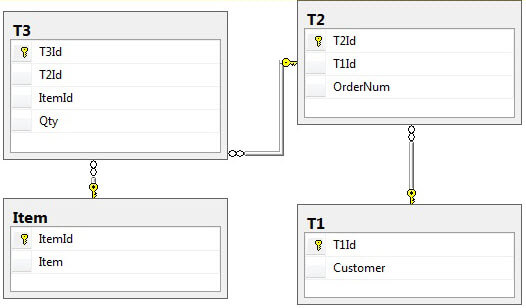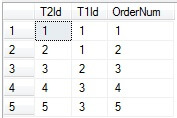Problem
As a DBA I have found many occasions in testing of various SQL Server deployments and scripts where I need to load a database with data from a lower environment or where I need to alter a table that might already have data in it in such a way that I need to first eliminate the data before I can proceed. Depending on the foreign key constraints in place, clearing old data can be a tedious process.
Solution
When I don't care about existing data in a SQL Server database, but I don't want to resort to dropping and re-creating the database and all the additional tasks that come with it, I have found truncating all the data in all the tables to be an effective solution. I prefer
truncating over deleting the data because of the various advantages truncating has by nature when you want to reset to a clean state.
Unfortunately, in most complex database designs there are numerous
foreign key relationships that make it impossible to just use a simple "for each" loop and issuing a TRUNCATE command.
To illustrate this problem and my solution, we first need to create a database with several tables with foreign key constraints.
CREATE DATABASE ForeignKeyTest
GO
USE ForeignKeyTest
GO
CREATE TABLE T1
(
T1Id INT IDENTITY
PRIMARY KEY
NOT NULL
,Customer VARCHAR(50) NOT NULL
)
GO
CREATE TABLE T2
(
T2Id INT IDENTITY
PRIMARY KEY
NOT NULL
,T1Id INT NOT NULL
,OrderNum INT NOT NULL
)
GO
CREATE TABLE T3
(
T3Id INT IDENTITY
PRIMARY KEY
NOT NULL
,T2Id INT NOT NULL
,ItemId INT NOT NULL
,Qty INT NOT NULL
)
GO
CREATE TABLE Item
(
ItemId INT IDENTITY
PRIMARY KEY
NOT NULL
,Item VARCHAR(50)
)
GO
ALTER TABLE dbo.T2
ADD CONSTRAINT FK_T2_T1 FOREIGN KEY( T1Id) REFERENCES dbo.T1 ( T1Id)
GO
ALTER TABLE dbo.T3
ADD CONSTRAINT FK_T3_T2 FOREIGN KEY( T2Id) REFERENCES dbo.T2 (T2Id)
GO
ALTER TABLE dbo.T3
ADD CONSTRAINT FK_T3_Item FOREIGN KEY(ItemId) REFERENCES dbo.Item(ItemId)
GO
INSERT dbo.T1
( Customer )
SELECT 'FirstCust'
UNION
SELECT 'SecondCust'
UNION
SELECT 'ThirdCust' ;
INSERT dbo.T2
( T1Id, OrderNum )
SELECT 1, 1
UNION
SELECT 1, 2
UNION
SELECT 2, 3
UNION
SELECT 3, 4
UNION
SELECT 3, 5 ;
INSERT dbo.Item
( Item )
SELECT 'Gunk'
UNION
SELECT 'Slop'
UNION
SELECT 'Glop'
UNION
SELECT 'Crud' ;
INSERT dbo.T3
( T2Id, ItemId, Qty )
SELECT 1,3,5
UNION
SELECT 1,2,2
UNION
SELECT 2,1,4
UNION
SELECT 3,3,10;
This creates tables that look like this:
The data in the tables look like:
If you attempt to truncate any of the tables you get this error:
BEGIN TRAN
TRUNCATE TABLE dbo.T2
ROLLBACK
If you attempt to delete data from the tables you get this error:
BEGIN TRAN
DELETE dbo.T1
ROLLBACK
If you only want to use the DELETE statement against your tables, you can disable the constraints, delete your data and re-enable your constraints.
BEGIN TRAN
ALTER TABLE dbo.T1 NOCHECK CONSTRAINT ALL
ALTER TABLE dbo.T2
NOCHECK CONSTRAINT ALL
DELETE dbo.T1
SELECT * FROM dbo.T1 AS T
ALTER TABLE dbo.T1 CHECK CONSTRAINT ALL
ALTER TABLE dbo.T2 CHECK CONSTRAINT ALL
ROLLBACK
This works, but if you try do the same thing using TRUNCATE you get the following:
BEGIN TRAN
ALTER TABLE dbo.T1 NOCHECK CONSTRAINT ALL
ALTER TABLE dbo.T2 NOCHECK CONSTRAINT ALL
TRUNCATE TABLE dbo.T1
SELECT * FROM dbo.T1 AS T
ROLLBACK
A solution that can TRUNCATE all tables
In order to truncate all tables in your database you must first remove all the foreign key constraints, truncate the tables, and then restore all the constraints.
The below script accomplishes this in an automated fashion, by executing the following steps:
- Create a table variable to store the constraint drop and creation scripts for the database
- Load the data for all tables in the database
- Execute a cursor to drop all constraints
- Truncate all tables
- Recreate all the constraints
When the above script is run against any database, all the tables are emptied and reset.























